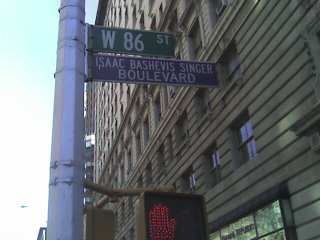 I’ve just come back from nearly two weeks in Washington, D.C. and New York on TJT biz. We were in D.C. to work with Liz Lerman and her Dance Exchange on a collaborative project that’s described – along with a report on our time in D.C. – on TJT’s blog. New York was about meetings with various people who may help the company bring some work back to Manhattan. Again, more about that TJT’s blog. What I want to write about here are two amazing experiences I had as an audience member of two wildly different but equally powerful theatre events.
I’ve just come back from nearly two weeks in Washington, D.C. and New York on TJT biz. We were in D.C. to work with Liz Lerman and her Dance Exchange on a collaborative project that’s described – along with a report on our time in D.C. – on TJT’s blog. New York was about meetings with various people who may help the company bring some work back to Manhattan. Again, more about that TJT’s blog. What I want to write about here are two amazing experiences I had as an audience member of two wildly different but equally powerful theatre events.Naturally, I was looking forward to hearing something new from Marcus.
When I emerged from the Astor Place subway stop and saw the banners of the Public Theatre waving against a scrubbed blue sky, I was overcome with a flood of thirty year-old memories. I had spent many months here working with the late Joe Chaikin, founder of the Open Theatre and, for the two years that led to founding TJT, my mentor. Among other projects, I was in his production of The Dybbuk, in 1977 and walked this route from the Astor Place station half a block to the Public for the length of the unconventionally long rehearsal time he insisted on and for the ten or twelve weeks of performances. I shared a loft with Bruce Myers, on loan to Joe from Peter Brook to play the central character. Bruce was the only Jewish member of Brook’s Paris-based international theatre center. We shared a passionate curiosity about the possibility of creating a kind of Jewish theatre that no one had never seen. While I waited for Aaron, I looked for the bar across the street where Bruce and I would go after work and continue the Jewish Theatre conversation that eventually led me to start the work that became TJT and Bruce to create the two person Dybbuk in Paris and perform it to acclaim all over the world. I couldn’t find the bar. In 1989, TJT did Bruce’s two person Dybbuk, in which I played all the male roles and in 1994, I directed it with two younger actors.
I saw Aaron standing across the street, back at the Public. “What’s the matter?” he asked when I got close. I hadn’t realized that tears were running down my face. “Flashbacks,” I said.
The reading was in the same theatre that The Dybbuk had used and as we sat down, my eyes went right to the stage left corner, just in front of the proscenium arch, where I had my “big moment” in The Dybbuk, telling a story by an eighteenth century Jewish mystic who would appear as a character in TJT’s second play. But as soon as I let my eyes take in the dozen or so actors already on stage, sitting in front of black music stands, the ghosts of ’77 faded. And when they started reading, I was transported to the Louisiana-Mississippi border, the river itself, during the civil war. And the river spoke. Unfortunately, I haven’t been able to find the xeroxed program from the day so I can’t tell you the name of the awesomely talented woman who played “Miss Sippi” who is also Oshun (an oraisha, spirit, in the Yoruba/Voudon/Santeria traditions) and has a love-hate relationship with her uncle, Hades. Her powerful, rolling voice perfectly carried Gardley’s lush and sweeping language. At times, when the language would seem to reach its limit, the River would overflow into glorious song. The woman playing her had the voice (among several others) of a gospel preacher/singer. In fact, the entire cast, without exception, was flawless. I don’t know how much rehearsal they had – hours for readings are limited by Actors Equity – but all of it seemed to have been concentrated on the actors’ connections to the characters. There was no attempt to semi-stage anything, which sometimes happens in new play readings. Everyone stayed in her chair. The rich performances allowed our imaginations to do the rest. (To stage or not to stage is part of an ongoing, sometimes heated, conversation I’ve had with colleagues.)
The play, on one level, anyway, is a version of the Demeter/Persephone myth. Here, a black, enslaved woman named Poem lives Persephone’s fate and is taken underground by Hades. Poem's father is

On the other end of the spectrum, a few nights later, toward the end of the trip, I saw a highly polished, thoroughly rehearsed, well-tried out-of-town production of Company – a revival of Sondheim and Furth’s 70s musical directed in a very special, stripped-down style by John Doyle, who had directed last year’s Tony-winning Sweeny Todd. All twelve performers were triple talents: they played all the instruments virtuostically – every kind of string, reed, brass, keyboard and percussion instrument including tuba, french horn, sax, clarinet cello, bass, flute, violin, guitar – were fantastic singers and accomplished actors. I've never seen so much talent in one production. It's about Bobby, a young man on his 35th birthday confronting his own puer-nature – his boyish unwillingness to commit to a relationship – by means of a series of scenes with his various married couple friends, for whom he acts as a screen on which they can project their own dramas. In the end, in a glorious, life-affirming but completely unsentimental choral finale, all the couples bear witness to the particular gifts that only come with time, patience and acceptance as Bobby (as sung by the masterful Raul Esparza) has his own epiphany in a counterpoint song. Unlike Sondheim's "Into the Woods" which I saw a few years ago, this production dispenses with conventional and glossy stage effects – the set was a series of simple transparent acrylic cubes of different sizes. The brilliant notion of finding performers who could play the score (which is very complex and rich) without a conductor (!) as well as sing and act, thus losing the conventional separate orchestra in the pit between audience and stage, created an intimacy and a sense of mastery that you experience when you see circus performers doing impossible, death-defying acts. I mean, imagine three women doing a number where, while dancing, they seamlessly alternate between singing and playing saxophones in a constantly surprising and engaging musical arrangement that also reveals character and moves the action. And that was just one of many equally stunning moments. Raul Esparza, as Bobby, deserved every good thing Ben Brantley wrote about him in the New York Times review and more. It’s unusual to see such a young actor work with such wise restraint and understatement and then, in one incandescent moment, release a lifetime of unexpressed feeling in a single, devastating howl.
Corey--
ReplyDeleteI've accidentally stumbled across your blog and I hope you'll continue stories about the theatre, either personal memories, or about current shows. I find theatre people apart from critics reluctant to write about other people's work... usually because they have to work with the people they write about.
Tim
Great blog, Corey! I'm excited to see you writing about the past/present theatre in NY and it's great to hear news of emerging playwrights!
ReplyDeleteAlison Luterman